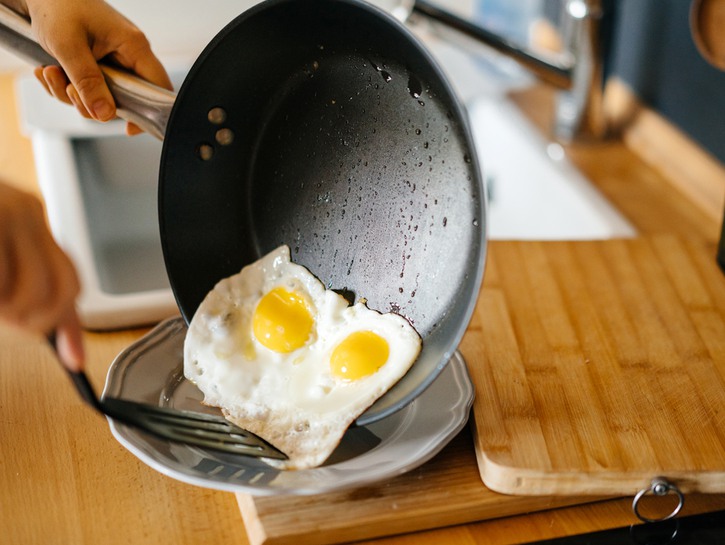Our nonstick pans have gotten us out of some sticky situations. They’re super useful in the kitchen and heaven knows we reach for them on a weekly basis but are they all that safe to use? Is there a special way to clean them in order to prolong their lives? And, if you’re not too keen on getting nonstick cookware, what are some good alternatives? We’re here to take the guesswork out of your busy lives.
What Is Nonstick Cookware?

Nonstick pans are great to have on hand, but what makes them such superstars when making dinner? When it comes right down to it, nonstick pans are typically made from aluminum and is coated with PTFE (the fancy name is polytetrafluoroethylene and it’s more commonly known as Teflon). Though, there are some items out there that are coated with ceramic instead of PTFE.
Is It Safe To Use?
A common fear is that nonstick items will eventually age and start to lose some of the coating over the aluminum. No one wants their dinner peppered with Teflon or ceramic, so you’re right to be concerned.
While it’s a rational worry, you can calm your nerves. Manufacturers have gotten pretty good at ensuring nothing falls apart or flakes off into your dinner. And even if anything did come off, it’s technically safe to ingest. In an interview with Today, Lisa McManus, executive testing and tasting editor for America’s Test Kitchen, said a flake or two of the material isn’t enough to cause any harm.

Though, McManus warns that the fumes coming from your nonstick cookware is something to keep an eye on. When it reaches super hot temperatures (600 degrees), your pans can release unpleasant fumes that are dangerous to be around. The good news is you’ll probably never reach temperatures that high at home.
You can be extra careful, however, by not preheating an empty pan and never cooking with extremely high temperatures. Keep the kitchen ventilated, too, so any fumes or smoke don’t get in your way or cause you any harm.
How Do I Clean Nonstick Cookware?
If you’ve got some nonstick pans at home in serious need of a scrub, you can remove grime in a few ways. The first would be to fill the pan with water and vinegar and bring everything to a boil. The grime should lift right off the bottom and float to the top where you can drain it all.

You can also use baking soda and water, bring things to a boil, and watch the grime lift right off. Any remaining particles can be removed with a sponge.
Nonstick Alternatives
We know not everyone has non-stick stuff at home, but that’s okay. Some effective alternatives are:
- Cast iron pans
- Stainless steel skillets
Be aware that these aren’t exactly non-stick, but they’re reliable and durable and can last you for decades. Make sure you wash them properly and take good care of them to avoid any damage.
Final Notes
It’s true, you’re not likely to find something to replace nonstick. There are some other items out there that are just as reliable, but they will be susceptible to stains. So, if you’re really looking for a good pan then you ought to try your luck with Teflon. They’re easy to clean, helpful in the kitchen, and overall safe to use.
